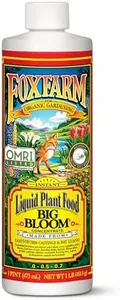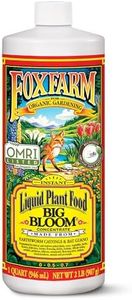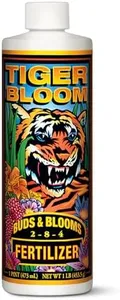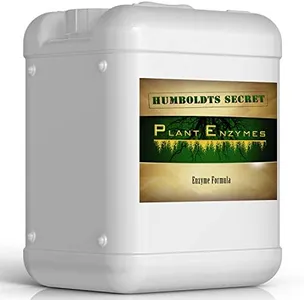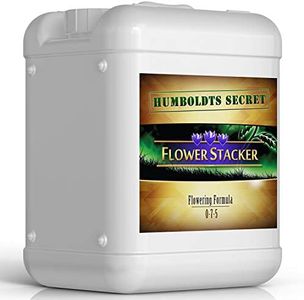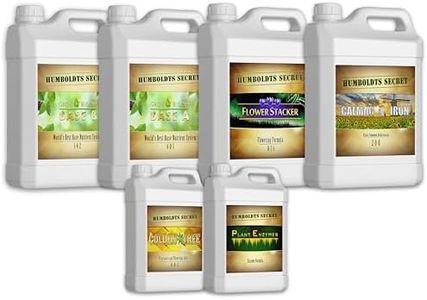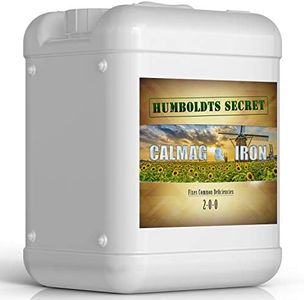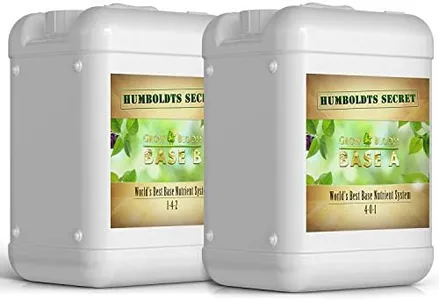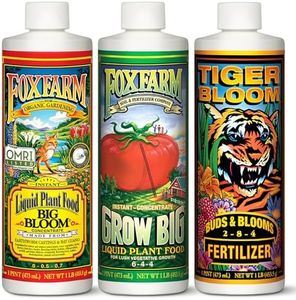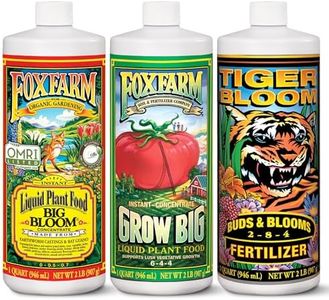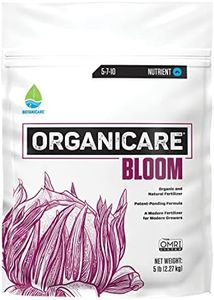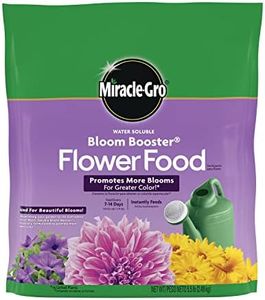10 Best Bloom Fertilizers 2025 in the United States
Our technology thoroughly searches through the online shopping world, reviewing hundreds of sites. We then process and analyze this information, updating in real-time to bring you the latest top-rated products. This way, you always get the best and most current options available.

Our Top Picks
FoxFarm - Big Bloom Plant Food, Liquid Fertilizer Concentrate for Flowers, Fruits, and Vegetables, All Purpose Plant Fertilizer for Indoor & Outdoor Potted Plants, NPK 0-0.5-0.7 (Quart)
Most important from
12640 reviews
FoxFarm Big Bloom is a liquid fertilizer designed to support flowering and fruiting plants with a gentle NPK ratio of 0-0.5-0.7, meaning it provides low but steady amounts of phosphorus and potassium, crucial for blooms and fruit development, without adding nitrogen which is more for leaf growth. This makes it especially suitable for gardeners focusing on flowers, fruits, and vegetables rather than greening foliage. The product stands out for its organic-inspired formula containing natural ingredients like earthworm castings and bat guano, offering micronutrients and beneficial microbes that synthetic fertilizers often lack. This can help improve root strength and enhance flavors in edible plants, which is a nice bonus for vegetable and herb growers.
Being a liquid concentrate, it dissolves easily in water and is simple to apply directly while watering, making it convenient for both indoor and outdoor potted plants. However, the relatively low nutrient content means it might not be sufficient as a sole fertilizer for heavy-feeding plants or large gardens, so it’s best used as a supplement or in combination with other fertilizers. Also, because it’s organic-based, nutrient release may be slower compared to synthetic options, so results might take a bit longer to show. Big Bloom is a great choice for hobbyist gardeners and those who prefer natural plant care, especially if growing a variety of flowering and edible plants in smaller spaces.
